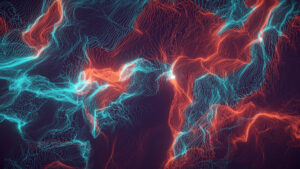Visual effects:
Visual illusions (also known as optical illusions) are defined as visually captured images that are different from objective reality. The visuals or information that is captured by our eye is then passing on to the brain for further processing and then it gives a percept that is quite different from the object being imaged. Optical illusions can be the result of a variety of phenomena, including physical effects that create images that are different from the objects that make them up, physical overstimulation (such as glare, tingling, color, motion) on the eyes and brain. affect, and cognitive illusions where the eye and brain draw unconscious conclusions.
Cognitive illusions include those that result from an unconscious misuse of certain optical principles. For example, Hering, Orbison, Sander, the Ames room, Müller-Lyer, Ponzo, and Wundt illusions all depends on the suggestion of appearance of distance by using diverging and converging lines, similarly, parallel light rays (or indeed any set of parallel lines) appear to converge at a vanishing point at infinity in images rendered two-dimensionally with an artistic perspective. This is the same reason for the famous moon illusion in which the moon looks bigger when it is near the horizon than it does at zenith. The famous mathematician Ptolemy was so amazed after seeing this illusion that he attributed it to the atmospheric refraction when he explained it in his treatise, optics. Custom lenses are designed for special purposes through precision optical manufacturing and to take care fo these lenses prism products selection is done very precisely.
Another type of optical illusion takes advantage of broken patterns to help the brain perceive symmetries or asymmetries that do not exist. Exmples like Ehrenstein, Poggendroff, café walll, Fraseer spiral, and Zollner illusions comes under this.
Photography:
The photography optics includes both medium and lenses in which the electromagnetic radiation is observed, whether it is a film, plate, or charged-couple device. Photographers must understand the reciprocity of the shot and the camera which is required by the relation:
Exposure ∝ Aperture Area x Exposure time x Screen Luminance
In other words, the smaller the aperture (gives greater depth of focus), the less light comes in, so the length of time has to be increased (blurring is possible when there is motion).
The absolute value which is required for the exposure time depends on how sensitive to light the medium being used is (measured as per the film speed, or, for digital media, by the quantum efficiency).








